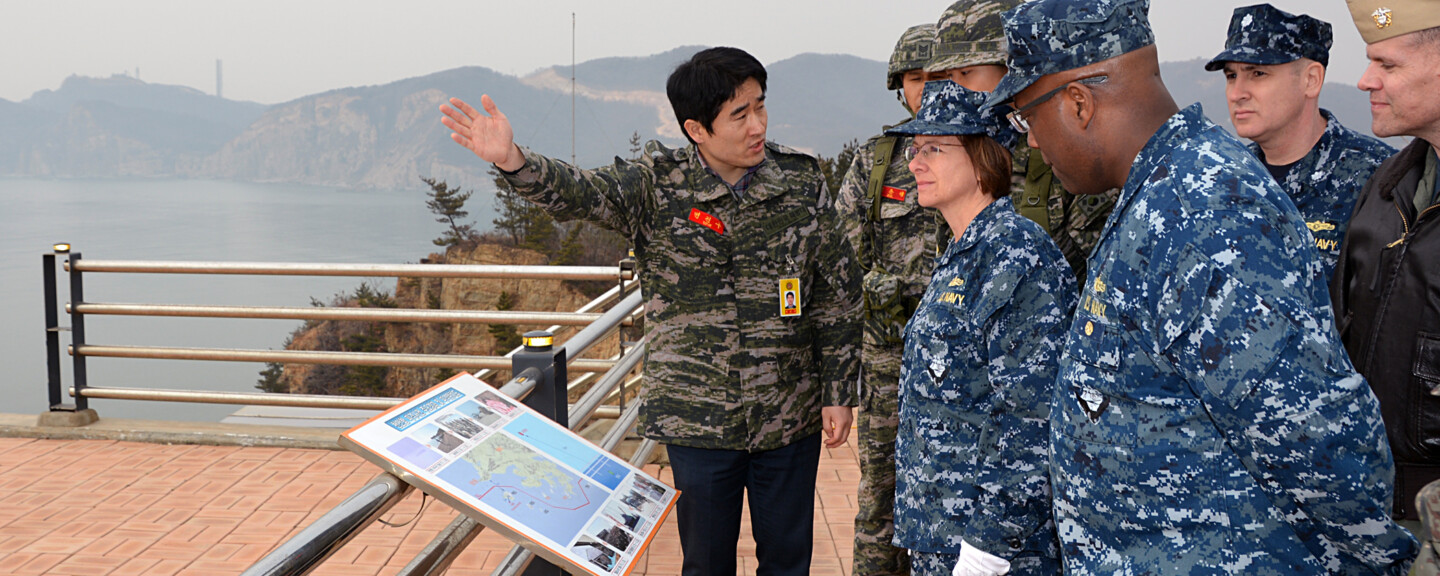A new book examines the geopolitical risks near the Korean Peninsula
The body of water dividing the People’s Republic of China and the Koreas has inherent geostrategic importance and military operational significance. It’s long been a complex, congested, contested water space: an overfished area beset by conflicting historical narratives and sovereignty claims. Yellow Sea battles were vital to the outcome of the Sino-Japanese and Russo-Japanese wars. Achieving at least temporary local control in the Yellow Sea was central to Japan’s strategy in the Russo-Japanese War. Control of the Yellow Sea was part of the Imperial Japanese Navy’s geographically-layered strategy between 1943 and its retrenchment towards the end of World War II.
Since the founding of the People’s Republic, Beijing has regarded the Yellow Sea and adjoining Bohai Gulf as critical to protecting the approaches to the strategic corridor running from the Bohai Gulf through Tianjin to Beijing (just 67 miles as the crow flies) that leads to the very heart of centralized PRC power. Following concerted preparations throughout the Cold War, including the fortification of islands spanning the Bohai Gulf to create defensive chains, as well as massive military and paramilitary buildup since the late 1990s, China enjoys both geographic advantages and local preponderance of available forces. Beijing exerts pressure on both Koreas through its ability to influence their economies and security. But beyond that, China also has the capability to launch “gray zone” activities—somewhere between peace and war—in the contested Yellow Sea using Coast Guard and Maritime Militia vessels that it has long wielded in the South and East China Seas.
Complicating matters further, the 1953 Korean Armistice Agreement left control over several islands in dispute. The agreement divided the majority of offshore islands between the Koreas based on a former provincial boundary line, but also stipulated that five “Northwest Islands”—Baengnyeong, Daecheong, Socheong, Yeonpyeong, and U—would remain under the control of the United Nations Command and South Korea. Following failure to agree upon how to extend the peninsula-dividing Military Demarcation Line seaward as a part of the Armistice itself, a boundary running roughly midway between the Northwest Islands and mainland North Korea—eventually termed the Northern Limit Line—was subsequently determined and implemented without Pyongyang’s participation.

North Korea has since engaged in its own limited-intensity maritime provocations, sometimes with fatal results. These include Pyongyang-sponsored smuggling related to its nuclear development program, fishing disputes that have resulted in the deaths of South Korean fishermen and coastguardsmen, the sinking of the South Korean naval vessel Cheonan, the shelling of Yeonpyeong Island, other clashes along the Northern Limit Line, and most recently oil smuggling operations that China has abetted in contravention of a UN-led effort to interdict them.
While haunted by history and ripe for future rivalry, this strategic sea has long failed to receive the scholarly attention it deserves. Moreover, although China has developed and deployed forces for maritime gray zone operations vis-à-vis all three of the “Near Seas” that touch its shores, its propensity and potential to use such forces in the Yellow Sea have similarly been neglected. In a new book, Maritime Gray Zone Operations: Challenges and Countermeasures in the Indo-Pacific, military experts offer fresh insights into China and North Korea’s maritime activities in the Yellow Sea.
Moving forward, matters could get far worse. Beijing appears determined to thwart a future Korean reunification. North Korea’s policies and its very future remain uncertain. Pyongyang’s reliance on Beijing’s support may mitigate its efforts to assert its overlapping claims within the relatively narrow confines of the northern Yellow Sea. Should the Kim dynasty encounter challenges to its power in the future, this would most likely motivate further deference to China, but could ultimately trigger more nationalist policies. These dynamics could thaw centuries-old Sino-Korean maritime, riverine, and land border disputes long frozen by contemporary geopolitics but freighted with history and national identity.
At its heart, the Yellow Sea area reveals a volatile political-military microcosm: one of the world’s most cramped, challenged maritime spaces. As an aircraft approaches or departs from Seoul’s Incheon International Airport, one of the world’s largest and busiest, it typically passes close to the Northern Limit Line, a seaward extension of the Military Demarcation Line dividing the Koreas since the 1953 Korean Armistice Agreement on land, but highly contested in practice. Incheon Airport lies near the historically-decisive Allied landing of 1950; today even undisputed North Korean territorial waters, airspace, and territory are not far away. Policymakers, take note: Danger looms in the contested Yellow Sea.
Andrew S. Erickson is a visiting Professor in Harvard’s Department of Government and an Associate in Research at the Fairbank Center. He is Professor of Strategy and the Research Director at the U.S. Naval War College’s China Maritime Studies Institute (CMSI). Erickson recently edited a new volume, Maritime Gray Zone Operations: Challenges and Countermeasures in the Indo-Pacific, which offers insights into China and North Korea’s maritime activities in the Yellow Sea.


